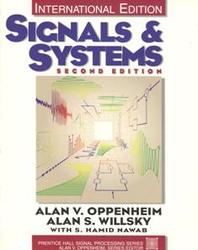C# Concisely
暫譯: C# 簡明精要
Judith Bishop, Nigel Horspool
- 出版商: Addison Wesley
- 出版日期: 2003-09-03
- 售價: $980
- 貴賓價: 9.8 折 $960
- 語言: 英文
- 頁數: 472
- 裝訂: Paperback
- ISBN: 0321154185
- ISBN-13: 9780321154187
-
相關分類:
C#
下單後立即進貨 (約5~7天)
買這商品的人也買了...
-
 Signals & Systems, 2/e (IE-Paperback)
Signals & Systems, 2/e (IE-Paperback)$1,250$1,225 -
 3D Computer Graphics, 3/e (Hardcover)
3D Computer Graphics, 3/e (Hardcover)$2,720$2,584 -
 UNIX 網路程式設計--網路應用程式設計介面 Sockets 與 XTI (UNIX Network Programming, Volume 1, 2/e)
UNIX 網路程式設計--網路應用程式設計介面 Sockets 與 XTI (UNIX Network Programming, Volume 1, 2/e)$880$704 -
 SQL 基礎講座
SQL 基礎講座$290$226 -
 鳥哥的 Linux 私房菜-伺服器架設篇
鳥哥的 Linux 私房菜-伺服器架設篇$750$638 -
 ASP.NET 程式設計實務使用 Visual C#.NET (Microsoft ASP.NET Programming with Microsoft Visual C# .NET Version 2003 Step By Step)
ASP.NET 程式設計實務使用 Visual C#.NET (Microsoft ASP.NET Programming with Microsoft Visual C# .NET Version 2003 Step By Step)$580$458 -
 學術論文寫作
學術論文寫作$320$304 -
 物件導向 OO 技術基礎講座
物件導向 OO 技術基礎講座$300$234 -
 Head First Servlets & JSP:SCWCD 專業認證指南 (Head First Servlets & JSP)
Head First Servlets & JSP:SCWCD 專業認證指南 (Head First Servlets & JSP)$880$748 -
 筆記型電腦採購聖經─2006 火力加強版
筆記型電腦採購聖經─2006 火力加強版$180$153 -
 計算機組織與設計 (Computer Organization and Design: The Hardware/Software Interface, 3/e)
計算機組織與設計 (Computer Organization and Design: The Hardware/Software Interface, 3/e)$680$646 -
 AutoCAD 2006 實力養成暨評量
AutoCAD 2006 實力養成暨評量$350$277 -
 Postfix 技術手札─郵件伺服器應用全攻略 (The Book of Postfix: State-of-the-Art Message Transport)
Postfix 技術手札─郵件伺服器應用全攻略 (The Book of Postfix: State-of-the-Art Message Transport)$580$493 -
 鳥哥的 Linux 私房菜基礎學習篇, 2/e
鳥哥的 Linux 私房菜基礎學習篇, 2/e$780$663 -
 .NET 網路與 I/O 技術手冊
.NET 網路與 I/O 技術手冊$620$490 -
 JavaScript 精緻範例辭典
JavaScript 精緻範例辭典$450$383 -
 Ajax 實戰手冊 (Ajax in Action)
Ajax 實戰手冊 (Ajax in Action)$680$537 -
 聖殿祭司的 ASP.NET 2.0 專家技術手冊─使用 C#
聖殿祭司的 ASP.NET 2.0 專家技術手冊─使用 C#$720$569 -
 Visual Basic 2005 程式設計與案例剖析
Visual Basic 2005 程式設計與案例剖析$650$553 -
 Pocket PC 裝置應用程式開發秘笈
Pocket PC 裝置應用程式開發秘笈$580$452 -
 ASP.NET 2.0 開發指南-使用 C#
ASP.NET 2.0 開發指南-使用 C#$650$514 -
 Illustrator 點子爆米花
Illustrator 點子爆米花$580$493 -
 Photoshop 點子爆米花
Photoshop 點子爆米花$580$493 -
 Windows Vista 升級手冊─硬體升級、資料轉移、軟體相容
Windows Vista 升級手冊─硬體升級、資料轉移、軟體相容$350$298 -
 跟我學 Windows Vista
跟我學 Windows Vista$299$236
商品描述
C# is an object-oriented, network-enabled programming language, developed expressly for Microsoft's .NET platform. C# and the associated class libraries provide the features that are the most important to programmers: object-orientation, graphics, GUI components, internet-based client-server networking and distributed computing.
C# Concisely is an introductory text which teaches object-oriented programming using the C# language. The reader is involved in object-orientation from the beginning, while developing skills in the use of control structures and data structures. The book covers nearly all of the language and its important namespaces, including collections and networking, and works through polymorphism and extensibility in depth.
While targeted at first year students, C# Concisely is equally applicable for those wishing to convert from other languages, and will be an invaluable resource for students at all levels. Judith Bishop is Professor of Computer Science at the University of Pretoria, South Africa, and author of several best-selling books on programming. Nigel Horspool is Professor of Computer Science at the University of Victoria in Canada. Both authors serve on grant awarding bodies, and have spent sabbatical leaves at IBM, Microsoft and universities in several countries.
Table of Contents
Preface.
List of Figures.
List of Examples.
1.
Introduction.
2. Using objects.
3. Inside Objects.
4. Controls and Arrays.
5. Graphical User Interfaces with Views.
6. Exceptions and Debugging.
7. Files and Streams.
8. Collections.
9. Polymorphism and Inheritance.
10. Graphics and Networking.
Appendix A. List of forms.
Appendix B. Keywords and
operators.
Appendix C. Formatters.
Appendix D. Unicode.
Appendix F. The Views.Form class.
Appendix G. Debugging with Windows.
Index.
商品描述(中文翻譯)
C# 是一種面向物件的、具網路功能的程式語言,專為微軟的 .NET 平台開發。C# 及其相關的類別庫提供了對程式設計師最重要的功能:物件導向、圖形、GUI 元件、基於網際網路的客戶端-伺服器網路以及分散式計算。
《C# 簡明教程》是一本介紹物件導向程式設計的入門書籍,使用 C# 語言進行教學。讀者從一開始就參與物件導向的學習,同時發展控制結構和資料結構的使用技能。本書涵蓋了幾乎所有的語言特性及其重要的命名空間,包括集合和網路,並深入探討多型性和可擴展性。
雖然本書的目標讀者是大一學生,但《C# 簡明教程》同樣適用於希望從其他語言轉換過來的人,並將成為各級學生的寶貴資源。Judith Bishop 是南非比勒陀利亞大學的計算機科學教授,並且是幾本暢銷程式設計書籍的作者。Nigel Horspool 是加拿大維多利亞大學的計算機科學教授。兩位作者均在資助機構任職,並曾在 IBM、微軟及多個國家的大學進行學術休假。
目錄
前言。
C# - 來源與去向。
本書大綱。
我們的方法。
視圖系統。
致謝。
圖表清單。
範例清單。
1. 介紹。
前言。
程式語言的角色。
關於編譯。
互動式開發環境。
開始使用 C#。
2. 使用物件。
物件介紹。
物件的成員。
程式的結構。
字串、輸出與格式化。
變數、賦值與輸入。
理解 C# API。
3. 物件內部。
類型的結構。
欄位與屬性。
數值類型。
表達式。
簡單迴圈。
輸出格式化。
方法與參數。
案例研究 1 - 電話帳單比較。
4. 控制與陣列。
布林表達式。
選擇語句。
重複語句。
簡單陣列。
字串與字元。
額外的選擇語句。
案例研究 2 - 石頭剪刀布遊戲。
5. 使用視圖的圖形使用者介面。
圖形使用者介面。
GUI 的元素。
視圖介紹。
視圖佈局。
視圖控制。
視圖方法論 進階使用視圖。
案例研究 3 - 超市收銀機。
6. 異常與除錯。
錯誤。
異常處理。
除錯。
使用除錯程式。
7. 檔案與串流。
檔案與串流。
輸出的串流。
輸入的串流。
作為設計模式的檔案處理。
視圖中的檔案。
8. 集合。
關於類別的更多資訊。
集合。
作為集合的陣列。
排序列表。
案例研究 4 - 訓練計畫。
9. 多型性與繼承。
變化世界中的物件。
多型性的介面。
透過繼承的可擴展性。
案例研究 5 - 增強 StarLords 序列化。
10. 圖形與網路。
圖形介面。
簡單的圖形特性。
圖像。
使用執行緒的動畫。
網路。
案例研究 6 - 自動提款機客戶端-伺服器系統。
附錄 A. 表單清單。
附錄 B. 關鍵字與運算子。
關鍵字。
運算子與標點符號。
附錄 C. 格式化器。
格式規範。
數字格式說明符。
自定義數字格式化器。
日期時間格式化器。
附錄 D. Unicode。
輸入 Unicode 字元。
選定字元。
附錄 E. 有用的命名空間。
.NET 框架類別庫。
命名空間的使用。
附錄 F. Views.Form 類別。
使用 Views 創建表單。
Views.Form 的規範語法。
分組標籤。
控制標籤。
屬性值。
Views.Form 方法。
建議的編碼風格。
使用索引器操作。
附錄 G. 使用 Windows 進行除錯。
介紹。
cordbg 除錯器。
即時除錯器。
Visual Studio 除錯器。
索引。










